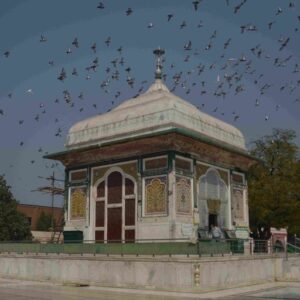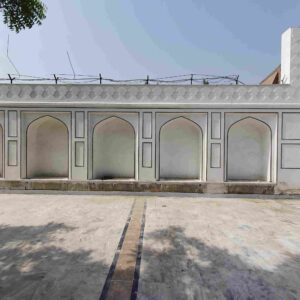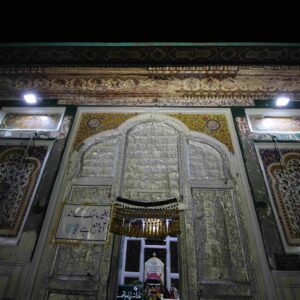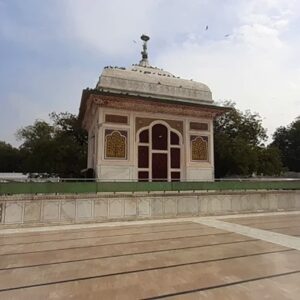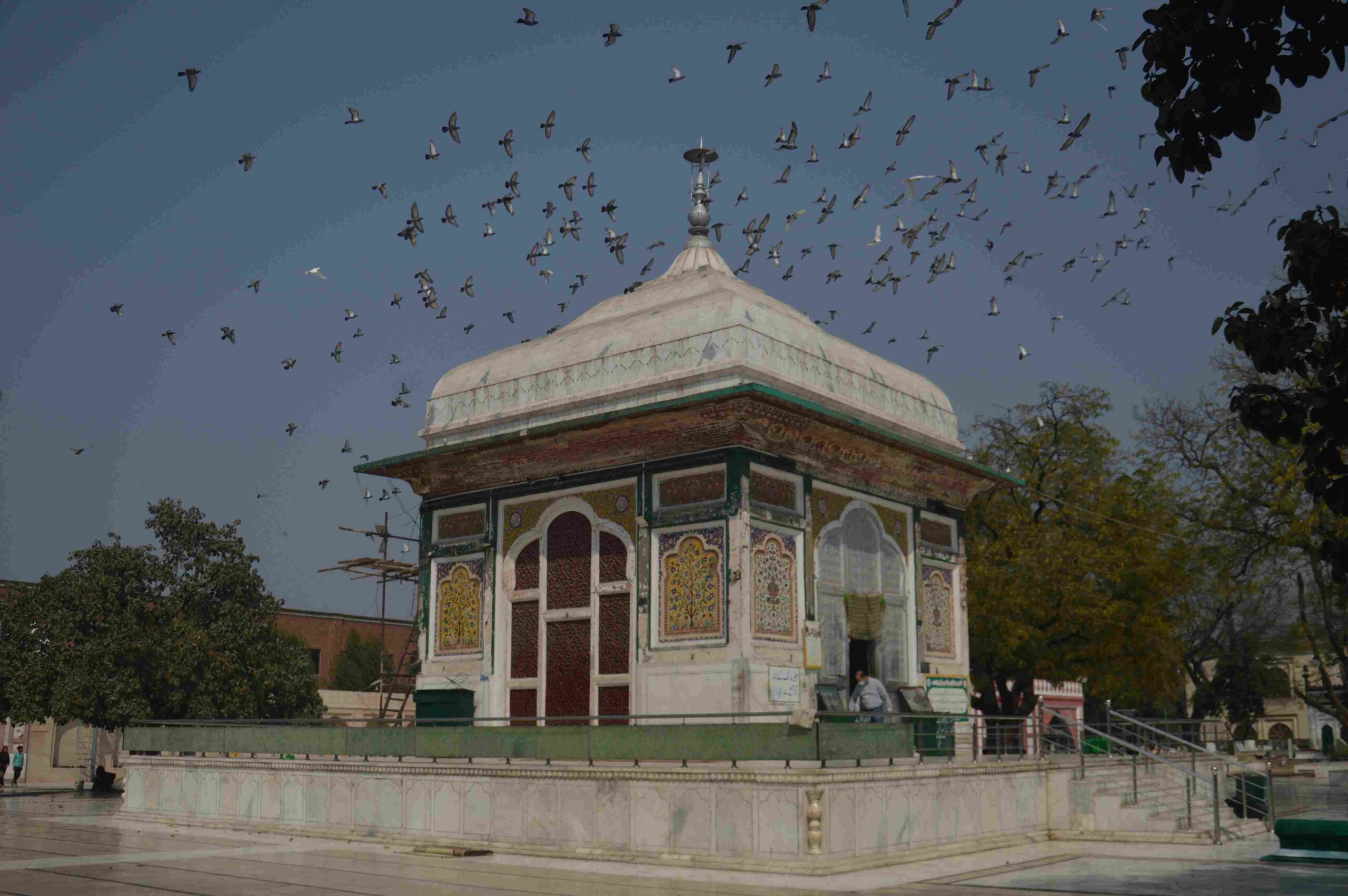
The 16th century saint Mir Mohammad or Hazrat Mian Mir Sindhi Qadri (1531 – 1635), sometimes also referred to as Mian Mir Bala Fir Lahori, hailed from Siwistan, with a distinguished lineage traced back to Hazrat Umar, the second caliph of Islam.
The impressive doorway of soft pink stone embellished with ceramic tiles leads into an enormous courtyard, dominated by a large tree, through the foliage of which the Mughal tomb carrying an unusual roof is visible. The sepulchre itself is placed on a raised white marble platform carrying delicate inlay patterns. The steps lead up to the square structure, with overhanging chajja (eaves), which carries the remains of the celebrated saint. Although, some renovation is in evidence, the tomb surfaces are beautifully embellished with the fine Mughal fresco and ceramic tile work with fretwork screens spanning the openings.
On the west of the enclosure stands a 5-bay mosque roofed with comparatively shallow cupolas, rendered in a combination of pink and white—this is the historic mosque said to be of the same ancient vintage as the tomb. Several cloisters line the western and southern boundary of the enclosure, and enormous trees and a multitude of pigeons creating a hushed and secluded world.
The saint arrived in Lahore at the age of 25 during the reign of Emperor Akbar. He went through a long period of self-denial—which, it is said, extended to 40 years—when he would not sleep the whole night and would fast for a whole week at a time, sometimes prolonging the fast to a whole month. His piety and practice of meditation and detachment endowed him with a legendary status and it was widely believed that in virtue, beneficence and learning he had no equal. He was fond of religious, devotional music—the sama’a—as well as the local ragas.


